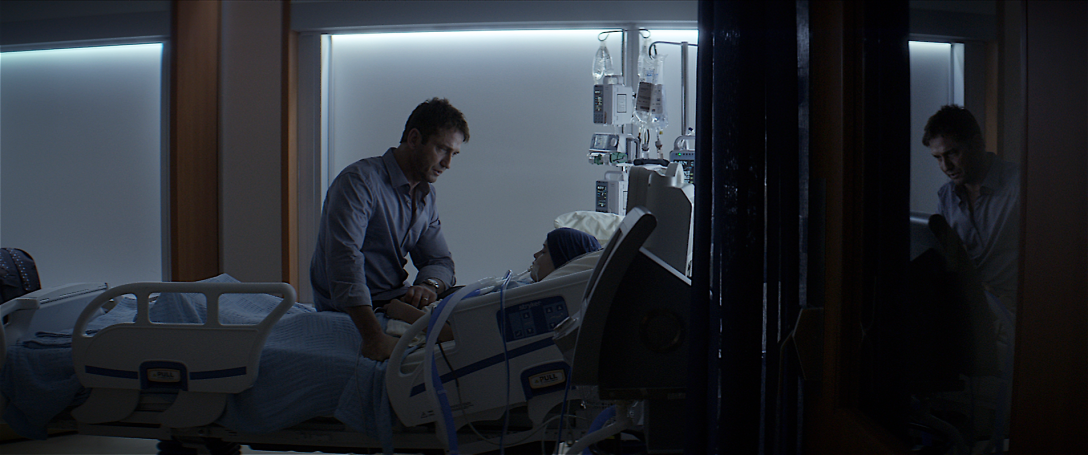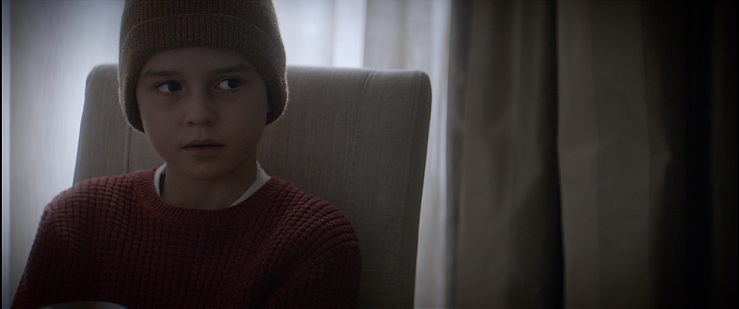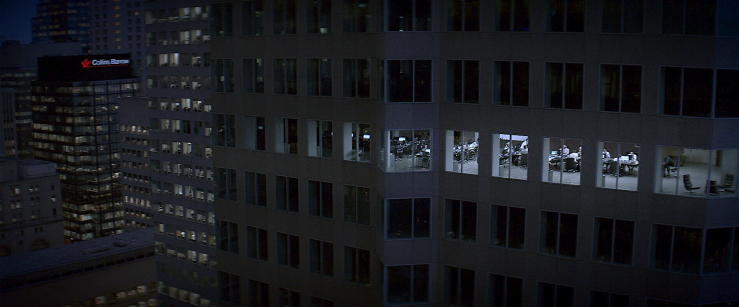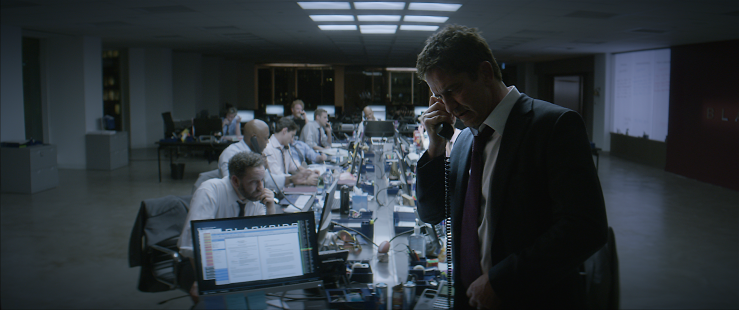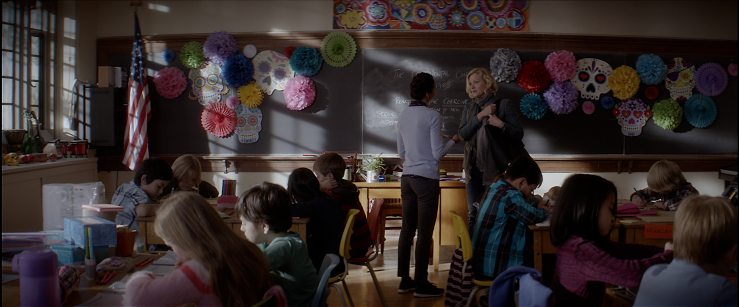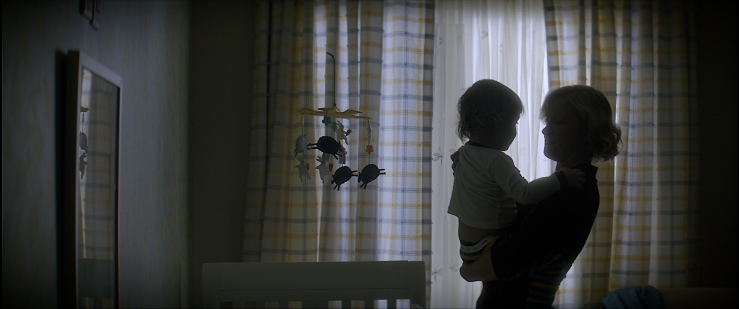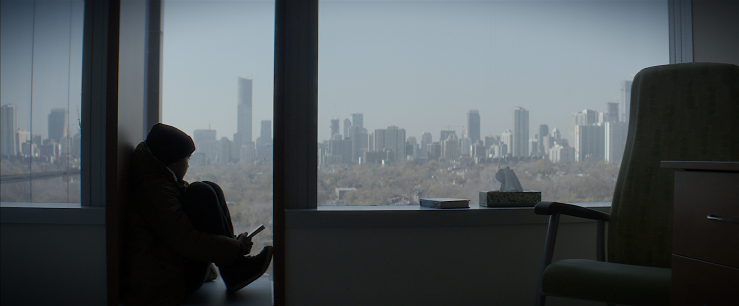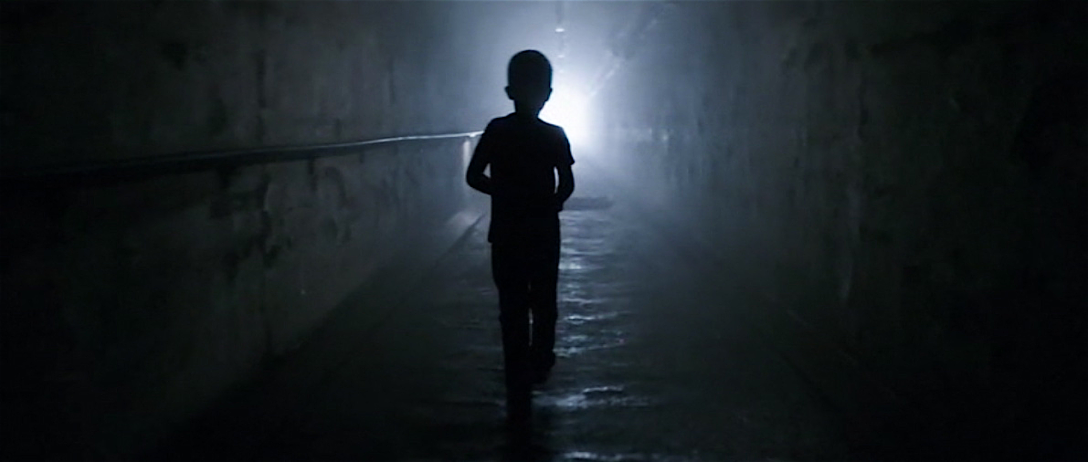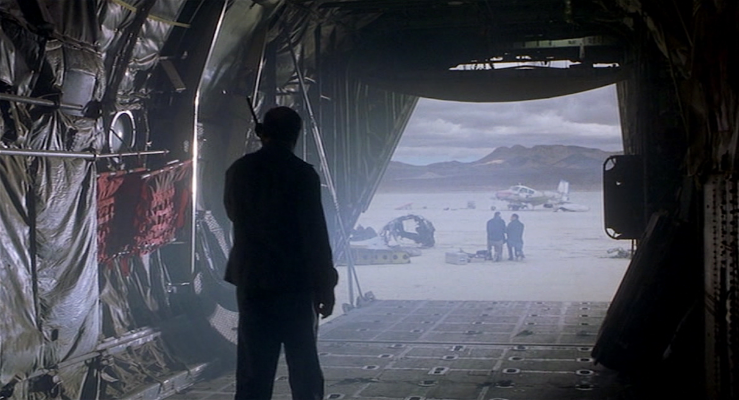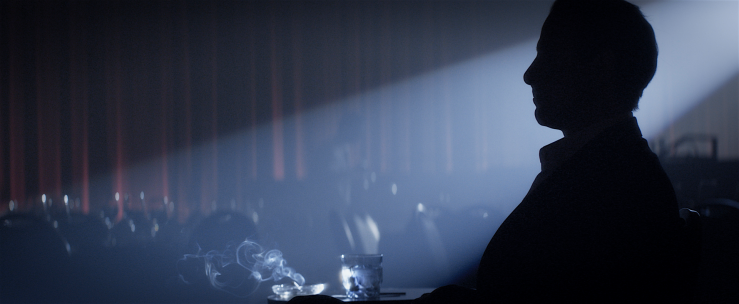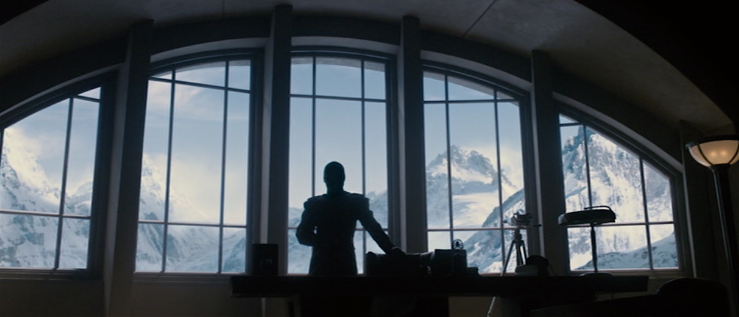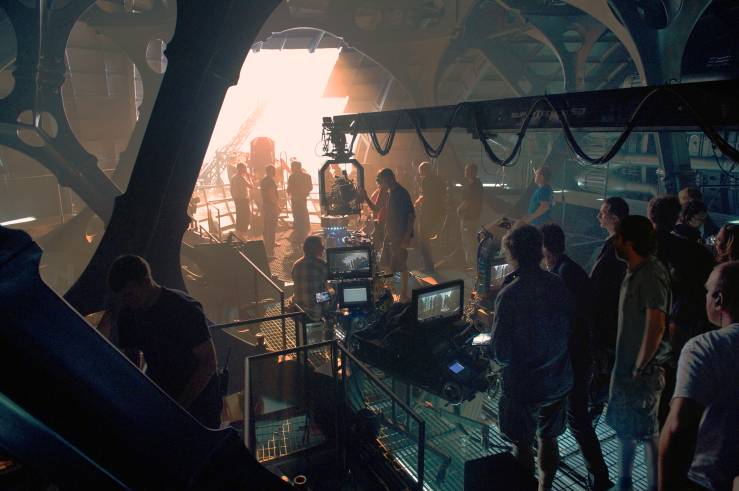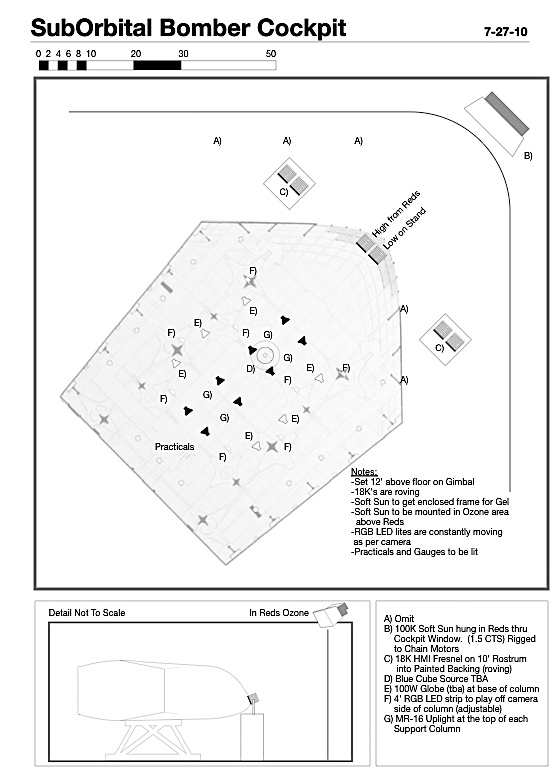For JP3, we had a complicated Pteranodon chase that transpires across 5 different stages and set-pieces, and concludes in a large space at the base of a deep valley. The sequence begins on a suspension bridge shrouded in fog, where one of our characters is plucked-off and carried away by a mysterious flying beast. Chase is given by way of cantilevered walkway and parasail and eventually lands at water level on a silked-over set built in 5 feet of water. This is a very large negative-fill silk rig erected over that set on Falls Lake on the Universal Lot. We constructed this rig since the set to be built consisted of some steep cliff faces with water beneath that contained much of the action during and after our Pteranodon flight sequence. Because the sequence is carried out in fog and soft skylight, and because Falls Lake has a south face and was largely front lit during the day, it necessitated the construction of a large silk overhead. We considered many options such as traditional crane mounted rigs and other crazier ideas than this. We ultimately landed on this plan because it provided some structure overhead for flying stunt rigs and SFX rig points. There were a few hurdles to get over.

Our rig consisted of very large scaffold walls that were erected by the legendary Key Grip Bob Babin. He devised a way to have silks overhead manufactured in strips and layers as wind-loads were a huge concern for this giant structure. Because the Lake faces south, it was my desire to rig solids to the southern elevation of the rig, but horizontal wind loads negated that idea and a net was used to cut 70% of the southern sun and still allow air to pass through the wall, thus allowing the engineer to hit his number for wind on that hilltop. We were well into winter months so the sun was low to the south for much of the day… And daylight hours were short. This was a problem that ended being an enormous asset.
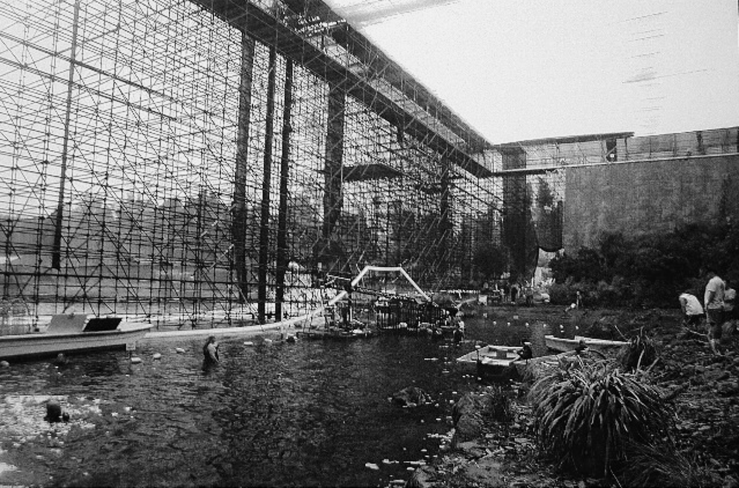
Bob and I pitched this plan to the Producers who were not entirely open to it at first… mainly due to the immense manpower and expense related to the plan. I remember sitting with Producer, Larry Franco, who called me into his office and said, “Shelly I’m about to pull the trigger in this rig and all-in with materials, time, labor and engineering its going to cost $500,000.00 which is worrying. Tell me this will work and that I’m not just pouring this money down a hole.” (For anyone who knows Larry you’ll know I cleaned up many of his well-placed and hilarious expletives). I’d be lying if I said I wasn’t worried as well, but I wanted to make sure Larry understood a key component of the plan. Since the days were short, we only had 9 hours of shootable light. My plan was to get two Musco Lights and some 18Ks and light through the overhead silk and shoot into the night with artificial light that matched our daylight. We were scheduled to shoot eight 9-hour days on that set. I told him that if we could get off that set in 6 days and save him 2 days of shooting, that would have a dollar value, no? Larry said, “Shelly, if you tell me that thing will save me two shooting days and you can shoot into the night with it, I’ll sign that check right now.” That said, the rig more or less paid for itself. In fact, with the savings on no force calls dictated by the need for daylight, the rig may have put production into profits.
a hole.” (For anyone who knows Larry you’ll know I cleaned up many of his well-placed and hilarious expletives). I’d be lying if I said I wasn’t worried as well, but I wanted to make sure Larry understood a key component of the plan. Since the days were short, we only had 9 hours of shootable light. My plan was to get two Musco Lights and some 18Ks and light through the overhead silk and shoot into the night with artificial light that matched our daylight. We were scheduled to shoot eight 9-hour days on that set. I told him that if we could get off that set in 6 days and save him 2 days of shooting, that would have a dollar value, no? Larry said, “Shelly, if you tell me that thing will save me two shooting days and you can shoot into the night with it, I’ll sign that check right now.” That said, the rig more or less paid for itself. In fact, with the savings on no force calls dictated by the need for daylight, the rig may have put production into profits.

On our very first day in the rig, we got held up with some kind of effects rigging. With the AD, I tried to design the days where most of our wide shots were shot during daylight hours and our night-for-day shooting would be limited to medium shots. With FX and stunt rigging delays (through no fault of theirs, it was a complicated project) it firmly placed our widest shots at the end of the day and well into our first night. Knowing the day was shaping up this way, I was sweating it out and I knew I’d be facing a huge test with a lot of people curious to see how this night-for-day idea would actually look on this scale.
Our first night-for-day shot was a shot of Alessandro Nivola being picked up by a CG Pteranodon and dropped back into the water. The art department had put greens and painted backings like the ones we had on Stage 12 at the two ends of our scaffold rig and with the atmosphere, allowed the backgrounds to recede into a texture. We had such good light coverage at night on the silks overhead, that I actually preferred the mood of our night-for-day work and didn’t object when turn arounds forced our calls later as the work week progressed. Thankfully, we got ourselves out of the set in the six days that we needed and as far as I know, this was the single largest scaffold rig ever built by the Local 80 Hollywood grips!


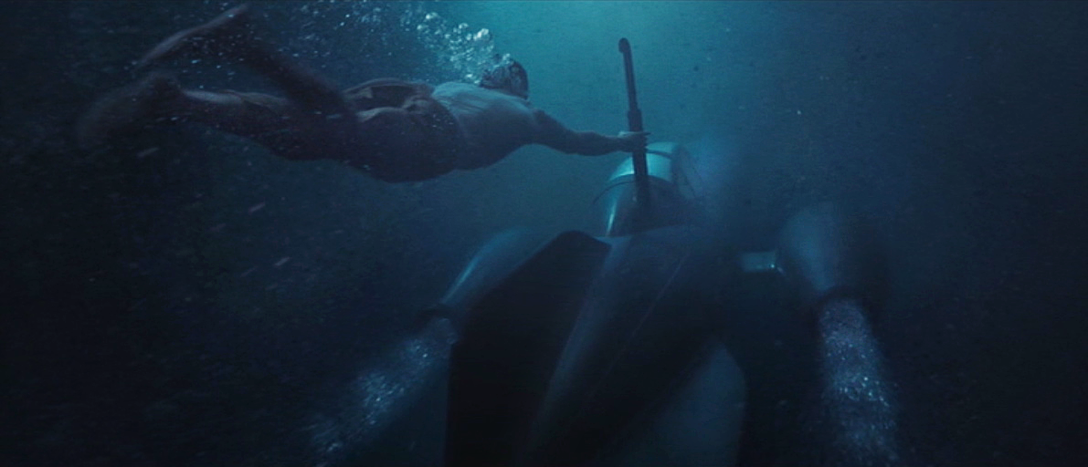
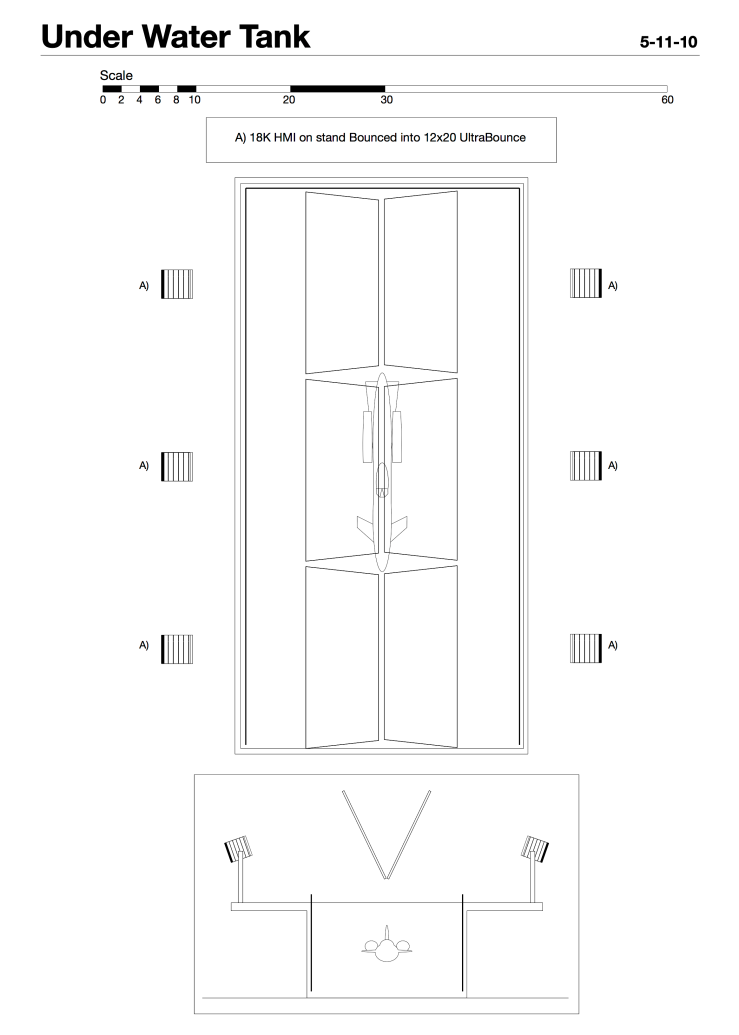
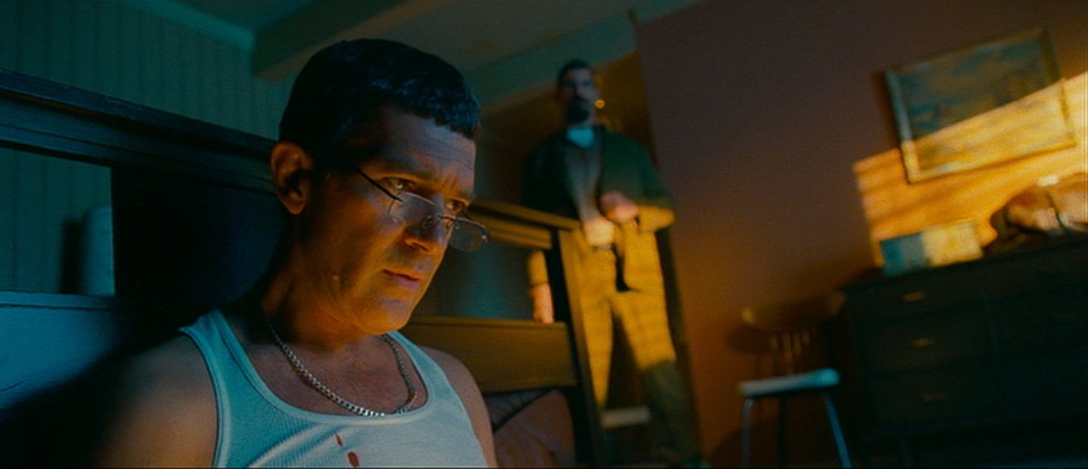
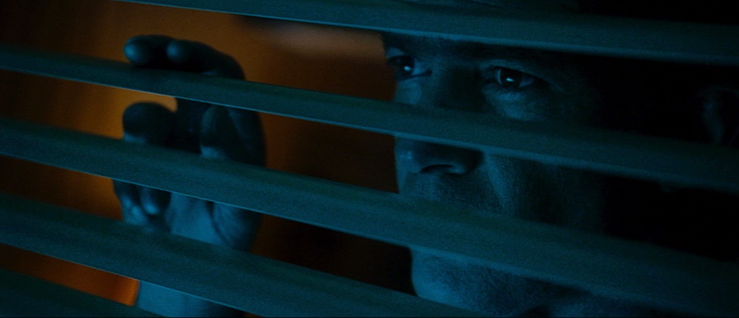
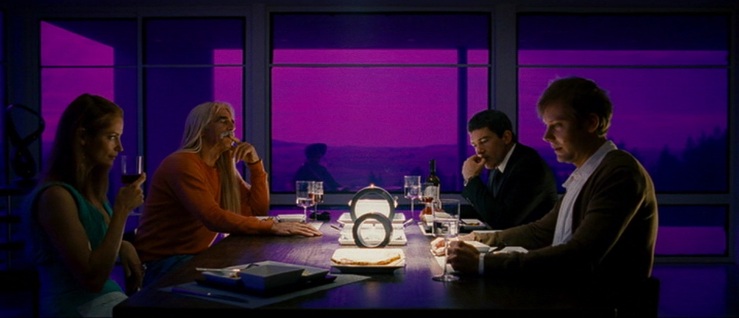
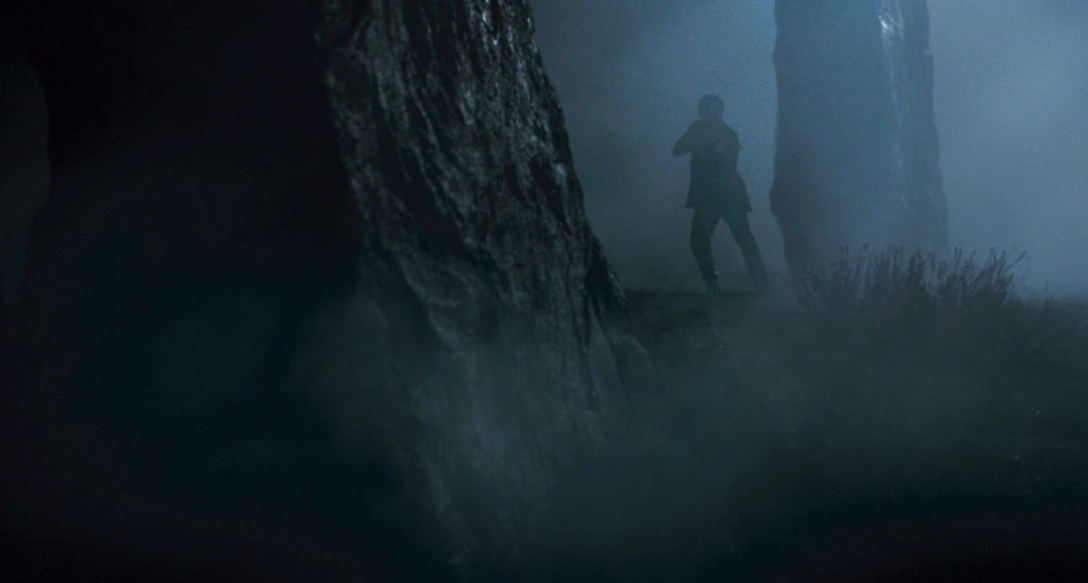
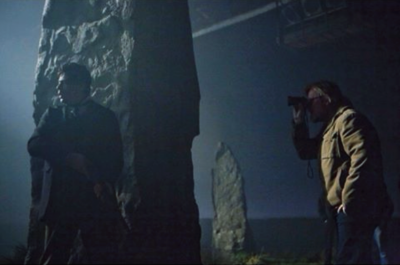 He, along with operator Des Whelan and First AC Julian Bucknall could move the camera just about anywhere with precision. Of course, it was extremely difficult movement. They are just good enough to make it appear effortless. I like to use a small handheld viewfinder and mark our lens positions on the ground. We decide on a post position for the crane based in those marks (considering space, arm sweep and where I propose to place lighting so that the arm can avoid a collision with Biggles’s equipment), then lay the shot out over those marks… Mark the arm then start playing. I’ll always try to start with a marked shot when working with the TechnoCrane so that we don’t waste time “hunting” for a shot with a complicated piece of equipment.
He, along with operator Des Whelan and First AC Julian Bucknall could move the camera just about anywhere with precision. Of course, it was extremely difficult movement. They are just good enough to make it appear effortless. I like to use a small handheld viewfinder and mark our lens positions on the ground. We decide on a post position for the crane based in those marks (considering space, arm sweep and where I propose to place lighting so that the arm can avoid a collision with Biggles’s equipment), then lay the shot out over those marks… Mark the arm then start playing. I’ll always try to start with a marked shot when working with the TechnoCrane so that we don’t waste time “hunting” for a shot with a complicated piece of equipment.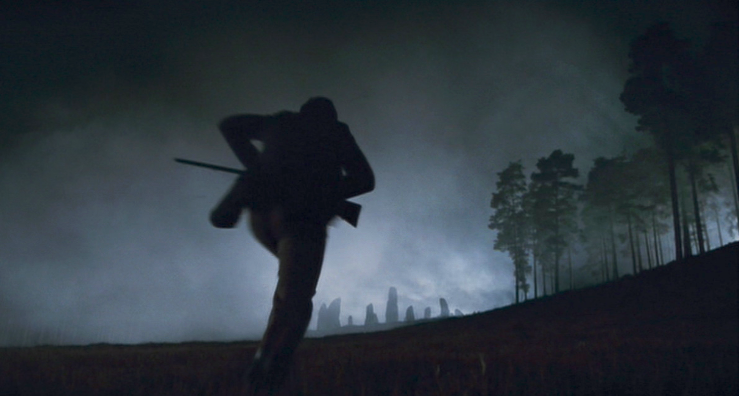
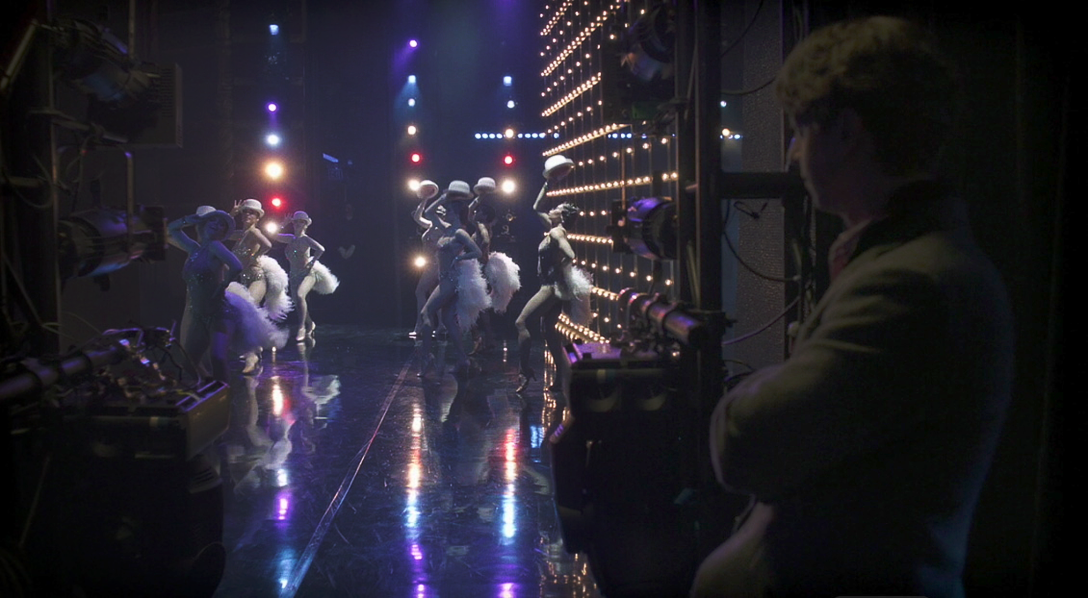
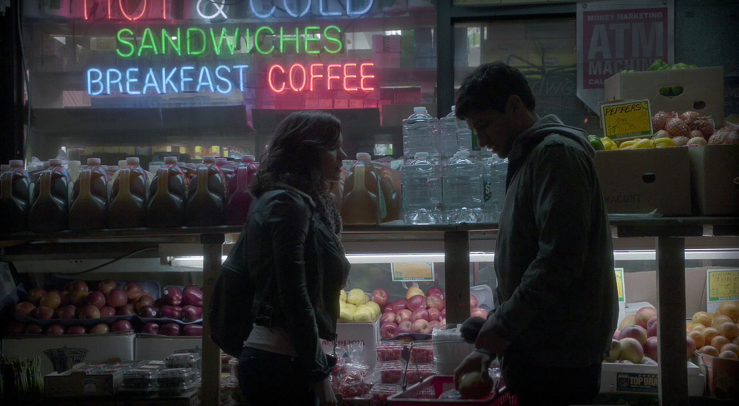
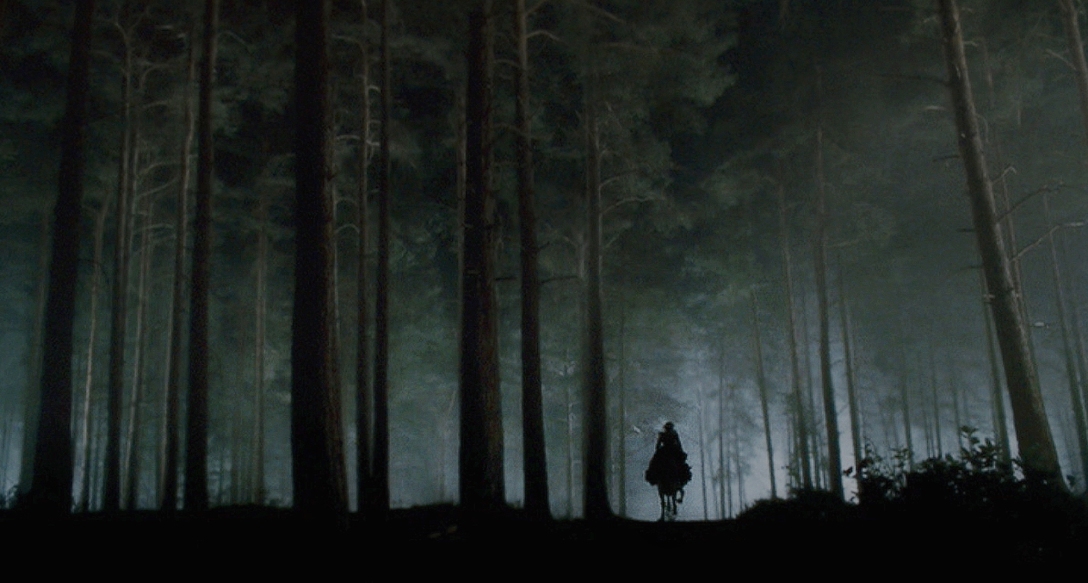
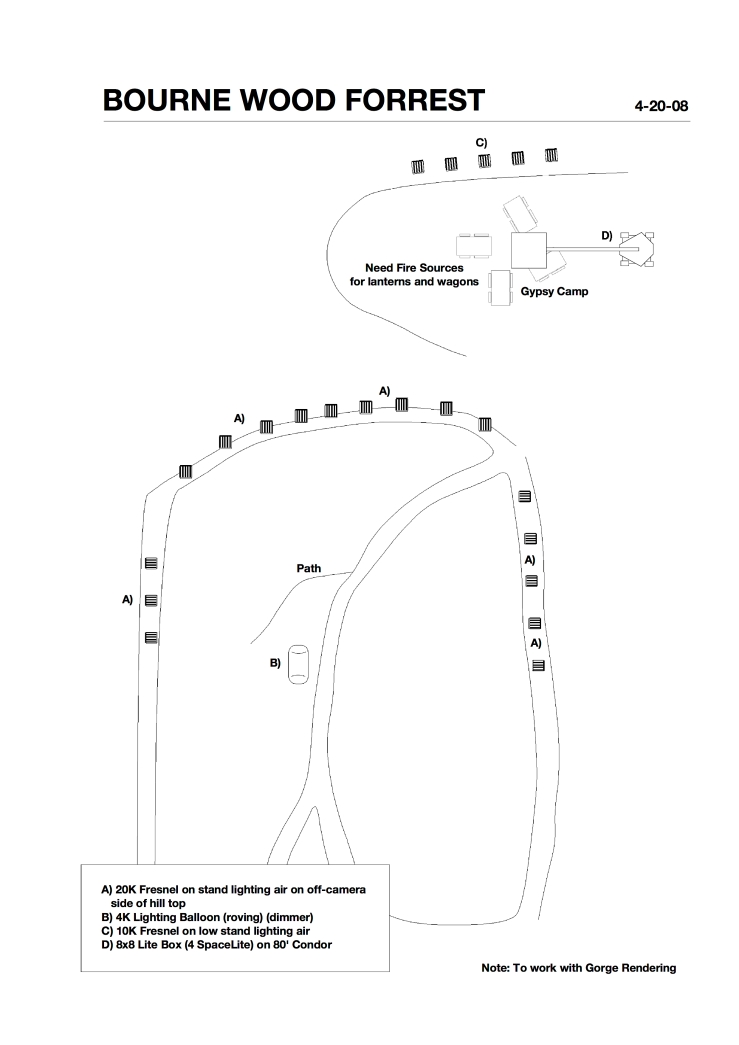
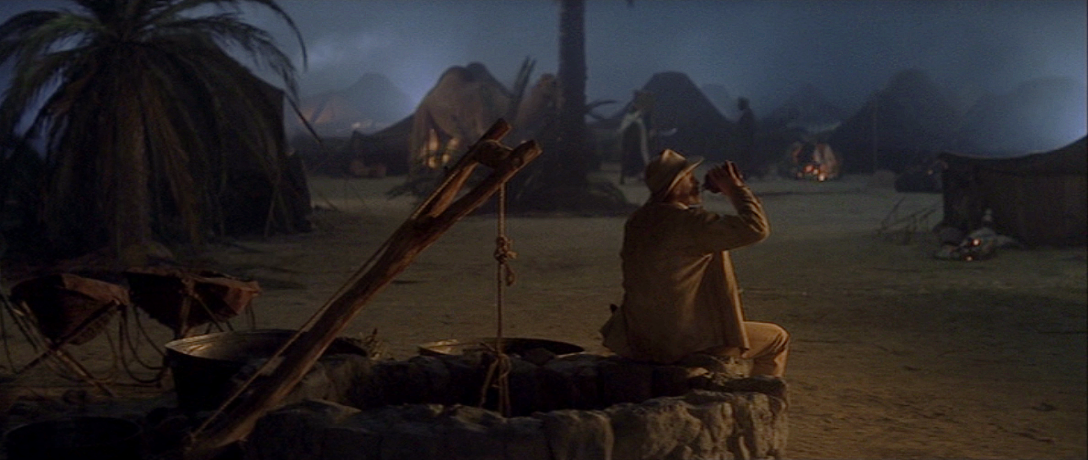
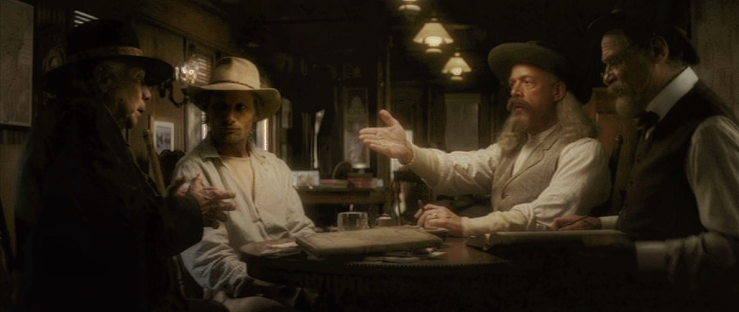 We wanted to give our US scenes a similar type of mood and respect to Gerome as well. Here are the great JK Simmons as Buffalo Bill and the unequaled Viggo Mortensen as Frank Hopkins. An interesting scene on a moving train shot on stage in West LA. In the scene, Frank’s friend and former Chief Eagle Horn beseeches Buffalo Bill to help him save the wild Mustang that roam the Dakotas. The meeting doesn’t end well as Buffalo Bill resorts to grandstand posturing as opposed to any sincere help. In this scene, I would have been tempted to key from the windows and let the train fall off in the interior and play the scene in moving shadowed light. However, much of the Gerome work had a more pronounced key, so I made the decision to abandon naturalism and go for the feel of a more orientalist style. Thus, the formal staging around the table that clearly favors composition… and a key top-source that is brighter than anything to be found in the late 1800’s. To be honest, it feels uncomfortable to part with reality in such a way, but I think it’s important for a cinematographer to previsualize not only the look of a scene, but also that scene’s composition in the larger telling of the story. In many cases, the DP is the only one truly viewing the story on that level while shooting. It’s certainly easier to stick with naturalism and shoot with old lenses… very easy in fact… but I think that the art of previsualization and execution of an authored visual idea is what transports an audience to a new world.
We wanted to give our US scenes a similar type of mood and respect to Gerome as well. Here are the great JK Simmons as Buffalo Bill and the unequaled Viggo Mortensen as Frank Hopkins. An interesting scene on a moving train shot on stage in West LA. In the scene, Frank’s friend and former Chief Eagle Horn beseeches Buffalo Bill to help him save the wild Mustang that roam the Dakotas. The meeting doesn’t end well as Buffalo Bill resorts to grandstand posturing as opposed to any sincere help. In this scene, I would have been tempted to key from the windows and let the train fall off in the interior and play the scene in moving shadowed light. However, much of the Gerome work had a more pronounced key, so I made the decision to abandon naturalism and go for the feel of a more orientalist style. Thus, the formal staging around the table that clearly favors composition… and a key top-source that is brighter than anything to be found in the late 1800’s. To be honest, it feels uncomfortable to part with reality in such a way, but I think it’s important for a cinematographer to previsualize not only the look of a scene, but also that scene’s composition in the larger telling of the story. In many cases, the DP is the only one truly viewing the story on that level while shooting. It’s certainly easier to stick with naturalism and shoot with old lenses… very easy in fact… but I think that the art of previsualization and execution of an authored visual idea is what transports an audience to a new world.